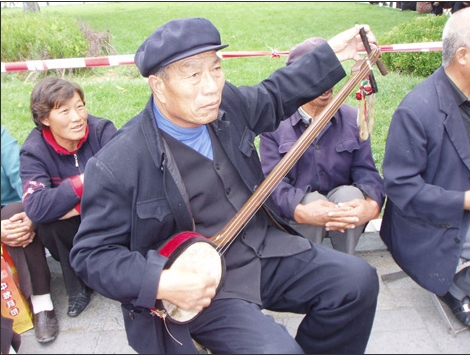
Xianxiao (literally, virtue and filial piety) is a folk singing-and-story-telling art form accompanied by sanxian (a three-stringed plucked instrument). In terms of region, it can be classified into Liangzhou Xianxiao and Hezhou Xianxiao.
Liangzhou Xianxiao, also called "Liangzhou Quanshan Shu" (Quanshan Shu, literally story-telling of exhortation for good deeds), is an ancient and long-standing story-telling form popular in towns and countries in Liangzhou District and neighboring Gulang County and Minqin County in Wuwei City, and some areas in Yongchang County in Jinchang City, Gansu Province. According to relative historical records, the origin of Liangzhou Xianxiao can be traced back at least to the late Yuan and early Ming Dynasties. Liangzhou Xianxiao mainly tells stories about ancient and modern heroes and wise men, ladies and chaste women, worthy progeny, emperors and generals and ministers of the state, talents and beauties, which develop the themes of poetical justice, admonishment, and comeuppance, hence the name Xianxiao.
Hezhou Xianxiao, also called "Hezhou Changshu", "Xianxiao Tanchang", "Hezhou Sanxian Shanshu", and "Hezhoudiao", is a traditional folk art form popular in Linxia, Gansu Province. Its primitive and simple tune and pleasant lyrics win the favor of Han, Hui, Dongxiang, and Bao'an people. The title "Hezhou" is the former name of Linxia, and Xianxiao is so called because of the contents about poetical justice, loyal officials and capable generals, virtuous wife and filial children. Hezhou Xianxiao took shape in the late Ming and early Qing Dynasties.